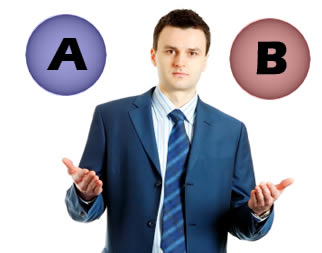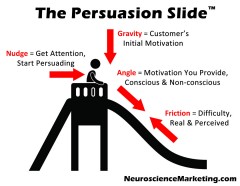Four Words That Double Persuasion
 Want to double your success in persuading people to do as you ask? Four simple words, and even other phrases with the same meaning, have been shown to double the success rate in dozens of studies worldwide.
Want to double your success in persuading people to do as you ask? Four simple words, and even other phrases with the same meaning, have been shown to double the success rate in dozens of studies worldwide.
What are these magic words? Here’s a clue: they aren’t, “But you have to!” or, “You absolutely must, really!” In fact, it turns out that reminding people they have the freedom to choose makes them much more likely to be persuaded. This technique is known as But You Are Free (BYAF). After making the request, one simply adds, “but you are free to choose.”
This technique has been studied extensively. Christopher Carpenter of Western Illinois University conducted a meta study of worldwide research on BYAF and came up with 42 studies that involved 22,000 participants. BYAF was found to double the success rate in this huge data set.
The exact language doesn’t seem to be important. Pointing out that the person isn’t obligated to do as you ask seems equally effective. The key is to give the person the security of knowing they are free to choose.
Why isn’t this used more often? I think BYAF may seem counter-intuitive to sales people. A typical sales effort often focuses on showing how the customer’s other choices are less desirable or won’t work at all. To wrap up a lengthy persuasive discussion with a reminder that the customer is free to choose seems, at first glance, like a recipe for failure. To some salespeople, it may seem to indicated a lack of confidence in their solution.
The way to use BYAF without seeming wishy-washy is to express your confident opinion while still pointing out that the customer is free to choose. For example,
The numbers show our solution will cut your monthly expenses by 15%. But, of course, you are free to choose.
In my opinion, it’s important to express that sentiment in a serious way. Implying that the customer is free to choose, but would be an idiot not to choose your solution, would be less likely to work.
One caution: BYAF seems to be somewhat less effective in sales situations, perhaps due to the general skepticism regarding anything the salesperson says. On the other hand, BYAF seems to work very well in more altruistic requests. For example, non-profits seeking volunteers could say,
I know you’d be a great tutor and the kids would love you. Of course, you are free to make your own choice.
 So, next time you are in a situation where you need to persuade, do the unexpected: emphasize that the other person is free to choose. It may seem risky, but, on average, you’ll have a much higher chance of success!
So, next time you are in a situation where you need to persuade, do the unexpected: emphasize that the other person is free to choose. It may seem risky, but, on average, you’ll have a much higher chance of success!
Have any Neuromarketing readers actually tried this? Share your experiences in a comment! (But, of course, you are free not to share, too.)
